Currently I'm writing a plugin for my company and we want to offset some math operations on meshes to C# to gain some speed in calculations. I'm not only a C# beginner (I'm a Python / Maxscript guy) but I also struggle to find good SDK documentation for 3DS Max.
My current problem: obtaining the world-relative position of a vertex in a mesh. Sounds easy but it poses some problems for me. I can get the vert position by using:
IPoint3 x = mesh.GetVert(vertID);
and for vert 3 which is in [0,0,0] of the scene it returns a Point3 value of [-23,86499, 17,5783, 0], probably relative to... well, center of the object I think. Or some local transformation matrix. The thing I want to get is the position of the vert in world space, which in this case I know is [0,0,0], as well as I can probe it with MaxScript by using:
polyOp.getVert $ 3
The simple function I'm using to poke around is:
List<IINode> nodes = nodesFromHandles(objHandles);
foreach (IINode i in nodes)
{
log(i.Name);
IObjectState iState = i.EvalWorldState(0, true);
IObject iObj = iState.Obj;
IPolyObject iPoly = (IPolyObject)iObj.ConvertToType(0, global.PolyObjectClassID);
ITriObject iTri = (ITriObject)iObj.ConvertToType(0, global.TriObjectClassID);
IMesh mesh = iTri.Mesh;
for (int vertID = 0; vertID < mesh.NumVerts; vertID++)
{
IPoint3 x = mesh.GetVert(vertID); /// RETURNS A BAD POSITION? RELATIVE TO WHAT MATRIX?
log(vertID.ToString() + ": " + x.X.ToString() + ", " + x.Y.ToString() + ", " + x.Z.ToString());
}
}
I guess I should probably do something with the object transform matrix, but I'm in the dark with that. Working on: 3ds Max 2014, MS visual Studio Community 2015 (C#), Win7x64, using Autodesk.Max.DLL. Any and all help appreciated, thank you in advance!
EDIT: (solution?) Correct me if I'm wrong, but by doing some satanic rituals and sacrificing some of my teeth I've come up with this thing. I essentially grab the object world Transform Matrix at a given time (set to frame 0, because why not?) and then doing a point transform. Seems to work quite well for now, but I need to do more tests.
List<IINode> nodes = nodesFromHandles(objHandles);
foreach (IINode i in nodes)
{
log(i.Name);
IObjectState iState = i.EvalWorldState(0, true);
IObject iObj = iState.Obj;
ITriObject iTri = (ITriObject)iObj.ConvertToType(0, global.TriObjectClassID);
IMesh mesh = iTri.Mesh;
/// OBJECT TRANSFORM MATRIX
IInterval iTimeRange = i.GetTimeRange(0);
IMatrix3 worldTm = i.GetObjTMAfterWSM(0, iTimeRange);
for (int vertID = 0; vertID < mesh.NumVerts; vertID++)
{
IPoint3 x = mesh.GetVert(vertID); /// RETURNS A BAD POSITION? RELATIVE TO WHAT MATRIX?
IPoint3 v = worldTm.PointTransform(x);
log(vertID.ToString() + ": " + v.X.ToString() + ", " + v.Y.ToString() + ", " + v.Z.ToString());
}
}
If anybody can verify or improve this - your welcome. :)



